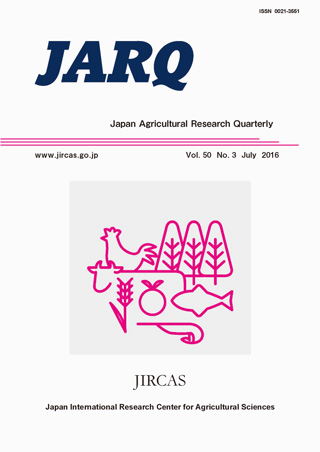Greenhouse Gas Sink-Source Functions of Grassland Ecosystems
| ISSN | 00213551 |
|---|---|
| NII recode ID (NCID) | AA0068709X |

This review summarizes research on greenhouse gas (GHG) exchange between the atmosphere and grasslands in Japan, identifies research need, and contributes to advances in the research field of GHG mitigation in grassland ecosystems. Applications of farmyard manure (FYM) and synthetic fertilizers do not reduce the ability of intensively managed grassland soils to oxidize methane (CH4). On the one hand, the use of synthetic fertilizers alone reduces the net ecosystem carbon balance (NECB) of mowed grassland ecosystems. On the other hand, the application of FYM with supplemental synthetic fertilizers at rates determined from the mineralization of FYM increases the NECB at the same yields, due mainly to C brought into the ecosystem as FYM. It also limits further emissions of nitrous oxide (N2O). Precipitation before and after fertilization in the summer months is the key driver of interannual variation in N2O emissions. These findings collectively suggest that the application of FYM with the appropriate reduction in supplemental synthetic fertilizers can maintain soil organic C and maximize the net GHG balance of mowed grassland ecosystems in Japan. Studies on organic matter inputs through root growth and turnover, and models to predict large N2O fluxes are needed to enhance our understanding of the NECB and net GHG balance of grassland ecosystems.
| Date of issued | |
|---|---|
| Creator | Akinori MORI |
| Subject |
carbon balance farmyard manure methane nitrous oxide soil |
| Publisher | Japan International Research Center for Agricultural Sciences |
| Available Online | |
| NII resource type vocabulary | Journal Article |
| Volume | 50 |
| Issue | 3 |
| spage | 187 |
| epage | 190 |
